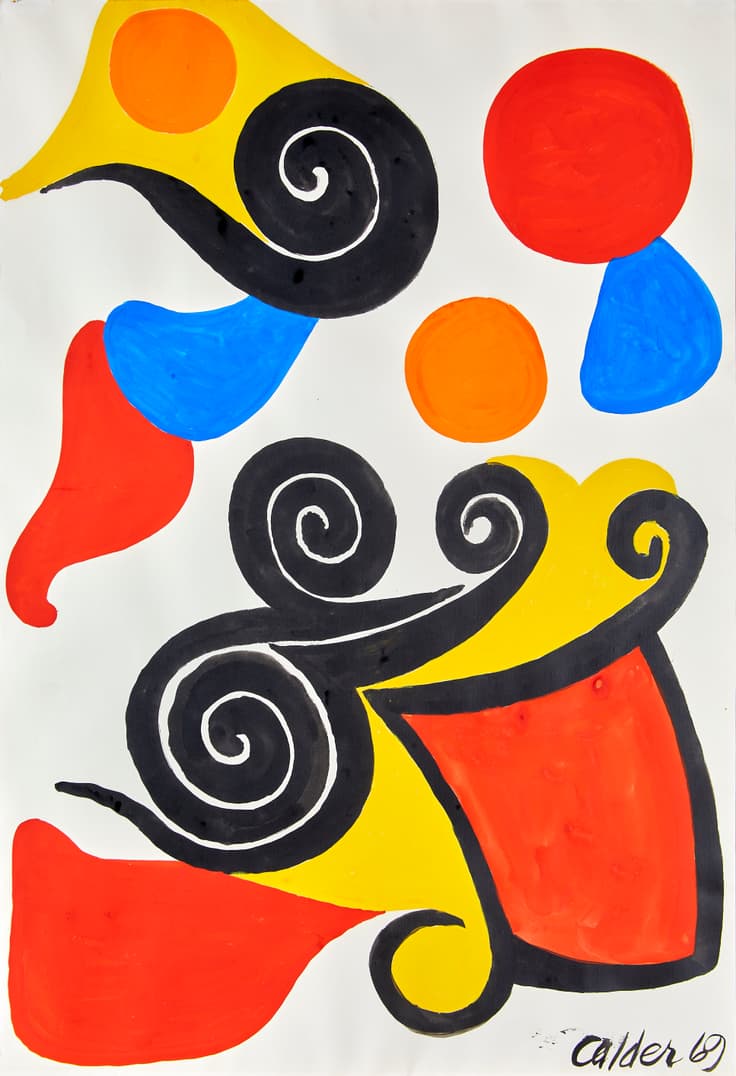ALEXANDER CALDER (1898-1976) Sandy Graphie
Lot 14
Sold
signed and dated 'Calder 69' (lower right); label of the Redfern Gallery (on the reverse)
gouache on paper
111 x 75.5 cm
painted in 1969
Provenance :
The Redfern Gallery, London;
purchased in November 1971 by Michael M. Rea, American businessman and collector;
private collection, USA
‘Well I like the original...I like black and white, that's one thing and then, black and white and red, red's very...it's the only color that really counts somehow. Then you just use the other colors…’ - Interview of Alexander Calder conducted 1971 October 26, by Paul Cummings, for the Archives of American Art
Executed in 1969, ‘Sandy Graphie’ is a large gouache by Alexander Calder, whose nickname was ‘Sandy’. The present gouache displays a perfect balance of twisting shapes and vibrant primary colours, including his favourite red, along with yellow, blue,and bold black, and orange. The artist once expressed a wish to have been a fauve in 1905.
Here, the ‘Calder on Paper’ showcases a synthesis of abstract geometric forms reminiscent of his sculptures, combined with representational yet enigmatic motifs.
He painted these gouaches quickly. As Calder transcribed his sculptural vocabulary onto paper, he embraced a medium that offered immediacy and allowed him to explore dynamism. Throughout his career, Calder explored various media and scales, his iconic 'mobiles' and 'stabiles', fascination with the circus, jewellery, and ultimately, the transition from sculptural space to the flat plane of paper.
In his final decades, Calder dedicated significant time to gouache painting and drawing alongside his sculptural practice. Notably, during a yearlong stay in Aix-en-Provence in 1953, he produced a series of paintings in gouache, continuing this practice throughout his lifetime.
Throughout his career, Alexander Calder received critical acclaim. After winning first prize for sculpture in the 1952 Venice Biennale, he received numerous major public commissions and numerous international exhibitions. In 1964–65, the Solomon R. Guggenheim Museum in New York showcased a retrospective of Calder's work.
Born in 1898 in Lawnton, Pennsylvania, Alexander Calder is regarded as one of the pioneers of Kinetic art, a movement referring to art created between approximately 1920 and 1970 that incorporates both real and apparent motion. He came from an artistic family, but he initially pursued engineering studies before transitioning to become an artist.
Calder's innovative approach positioned him as a leading figure in the avant-garde movement of twentieth-century abstraction.




